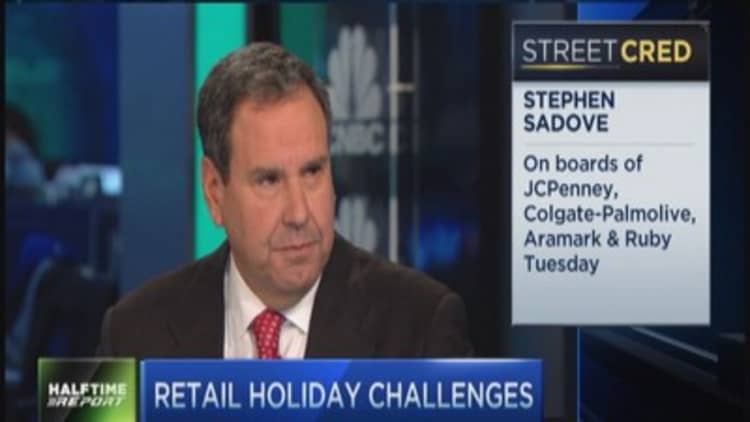Forget what you've heard—size doesn't always matter.
As analysts call for retailers to shrink their store counts, store sizes or sometimes both, the CEO of a major retail real estate firm said it's important to remember that there are no real estate maneuvers that can bail out a bad retailer.
Instead, DDR CEO Dan Hurwitz said, too much blame gets put on what the store, or "box," looks like, when often it's what's inside the box that's the problem.
"Keep in mind when Best Buy couldn't keep flatscreen TVs in the store, they weren't talking about reducing the size of their square footage," Hurwitz said on a panel for the International Council of Shopping Centers conference last week. "And when they couldn't give away 3-D TVs, they thought their stores were too big."
Read MoreInternational invasion: Retail's newest tenants
"If you're in the best piece of real estate in the United States and you have the wrong merchandise at the wrong time at the wrong price, you're going to lose," he said.
As more shoppers shift to online, analysts have pointed to the need for a number of retailers to shrink their square footage, to cut back on expenses. Although Hurwitz agreed that some retailers are not sized properly, he argued that the store's footprint shouldn't take all of the blame.
To his point, several U.S. retailers that are looking to shutter a large number of stores—RadioShack, Sears and Aéropostale, for example—have been unable to stem declining sales.
Analysts have also identified specialty stores such as Ann Taylor, teen retailers such as Abercrombie & Fitch, and department stores and big-boxers such as Wal-Mart, as being overstored.
Read MoreSears to accelerate closings, shutter 235 stores
"Related to the digital shift, if a retailer could start from scratch today, we believe many would choose to operate with a lower number of stores than they have, particularly in the mall universe," Wells Fargo analyst Paul Lejuez wrote in a note to investors.

Ken Bernstein, president and CEO of Acadia Realty Trust, who also was speaking on the panel, said that store closures and downsizing will play out over a long period of time. That's because there's rarely a value proposition for either the landlord or tenant to take one of these steps before the lease expires.
Read MoreBig box stores' big problem? They're just 'average'
Don Wood, president of Federal Realty Investment Trust, added that too much attention is paid to a retailer's rent, when the most important details of a lease are found in the terms between the landlord and the tenant. These can include kickout clauses, which allow early termination of a lease if a certain sales threshold is not met.
"Every lease I've ever seen is 50 or 70 or 100 pages long, and the rent takes about one page," he said. "The secret sauce here is in those terms between landlord and tenant."
The big unknown, Bernstein said, will come when a retailer's leases expire, and it has to decide whether to downsize, relocate or close a store.


